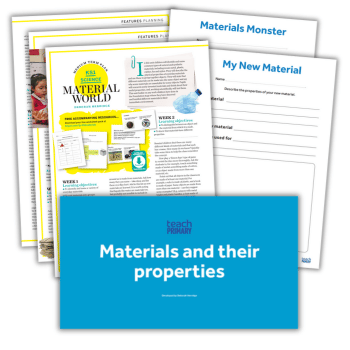PDF medium-term plan, worksheets and PowerPoint presentations
KS1
Years 1-2
In this materials KS1 unit from primary science subject lead Deborah Herridge, children will identify and name common types of natural and synthetic materials. These include wood, metal, plastic, rubber, fur and nylon.
The download contains the six-week plan plus additional worksheets and PowerPoints.
Children will describe the physical properties of everyday materials and use these to group together objects. They will state that you can make different materials into the same object and say why some materials are unsuitable for some objects.
Pupils will research newly invented materials and think about their useful properties, and, working scientifically, will test them.
This unit builds on any work children have done in EYFS where they have observed and handled different materials in their immediate environment.
Materials KS1 learning objectives
- Identify and name a variety of everyday materials
- Sort materials into groups
- Distinguish between an object and the material from which it is made
- Know that materials have different properties
- Understand that a property of a material determines how it can be used
- Identify the properties of some common materials
- Know that some materials occur naturally and some are human-made
- Research new synthetic materials
- Investigate which material is best for a particular purpose
- Carry out a simple test
- Present data effectively
- Group and sort materials in different ways
Deborah Herridge is the primary science subject lead for ITT at Northumbria University in Newcastle. She is the author of the Science Bug scheme of work, Explore Science scheme and author and editor of Cambridge International Science scheme. Read more about Year 1 science.











